2.Demand Flashcards
1/28
Earn XP
Description and Tags
Flashcards based on lecture notes covering demand, elasticity, and consumer surplus.
Name | Mastery | Learn | Test | Matching | Spaced |
|---|
No study sessions yet.
29 Terms
What does willingness to pay tell us?
The amount of benefit gained from consuming a good.
What does the price paid tell us?
The opportunity cost; what you could have had if you spent that money on the next best alternative.
What can be assumed about rational consumers?
They aim to maximize consumer surplus by consuming up to the point where Price equals Marginal Utility (P=MU).
Define consumer surplus.
Excess of what an individual would be willing to pay over what they actually paid in terms of utility.
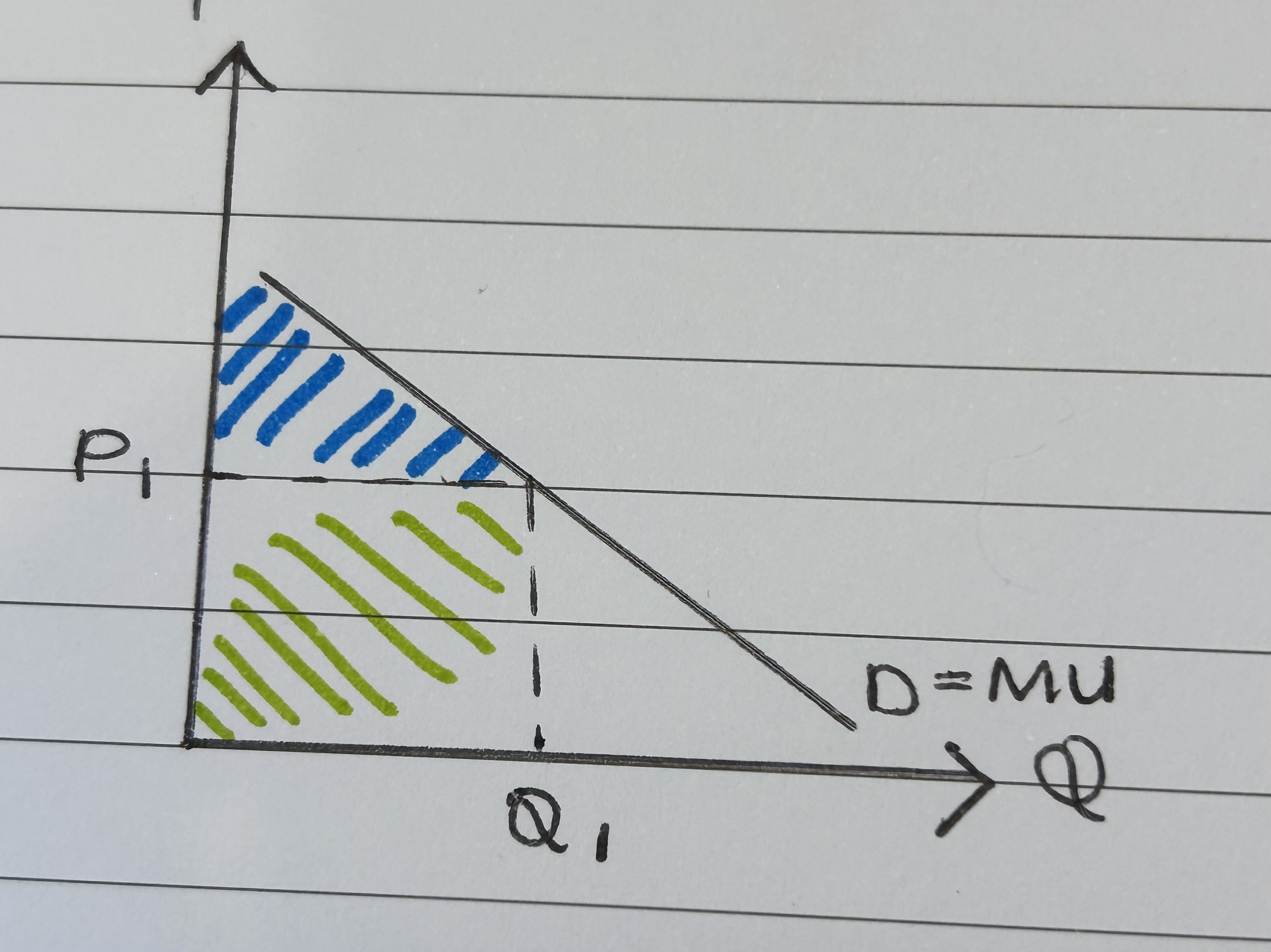
Define marginal consumer surplus MCS
Excess utility from the consumption of one more unit of a good over the price paid. MCS = MU - P
Define a Normal Good.
As income increases, demand increases. IED > 0
Define an Inferior Good.
As income increases, demand decreases. IED < 0
Define a Luxury Good.
IED is elastic; demand is sensitive to changes in income. 1 < IED < ∞, %ΔQD > %ΔI
Define a Necessity Good.
IED is inelastic; demand is not sensitive to changes in income. 0 < IED ≤ 1, %ΔQD < %ΔI
Define Income Elasticity of Demand (IED).
The responsiveness of demand to changes in income. IED = (%ΔQD) / (%ΔI)
Why is the demand curve downwards sloping?
Diminishing Marginal Utility: As you consume more of a good, the additional satisfaction (utility) from each extra unit decreases. 2. Income Effect: When the price of a good decreases, it's like your income has increased, allowing you to buy more of that good. 3. Substitution Effect: When the price of a good decreases, it becomes relatively cheaper compared to other goods, so consumers substitute away from the more expensive goods towards the cheaper one.
Define Price Elasticity of Demand (PED).
PED = (%ΔQD) / (%ΔP) - responsiveness of quantity demanded to a change in a good's own price.
How do tastes and trends determine demand?
Changes in preferences and acceptability of goods/services make them more or less in demand. e.g., Changes in acceptable body image / gender reassignment surgery.
How do population size and composition determine demand?
↑ population, ↑ demand; baby boom ↑ demand for pediatric care; life expectancy ↑ demand for health and social care interventions and geriatric care.
How does the price of other goods determine demand?
Substitute good: ↑ Price of substitute good, ↑ demand for current good and vice versa. Complement good: ↑ Price of complement good, ↓ demand for current good.
What factors influence the degree of substitutability?
Importance of good (necessity vs. luxury), Availability of alternatives, Time frame (SR less alternatives, LR more alternatives).
Define Demand.
Quantity of goods and services consumers are willing and able to purchase at every conceivable price.
Explain the difference between demand and quantity demanded.
Change in price relates to relationship between own price and quantity demanded ('along' demand curve). Change in demand relates to a shift in the demand curve.
What does the demand curve show?
The relationship between price and quantity demanded, ceteris paribus.
What are the determinants of demand?
Own Price, Income, Tastes/Preferences, Price of Other Goods, Population Size and Composition.
Describe how each determinant of demand impacts demand.
Own price - Shift along demand Curve. Income, price of other goods, tastes/trends, population size and composition - Shift the actual demand curve.
Define PED = 0.
Perfectly inelastic - Quantity demanded stays the same whatever the price.
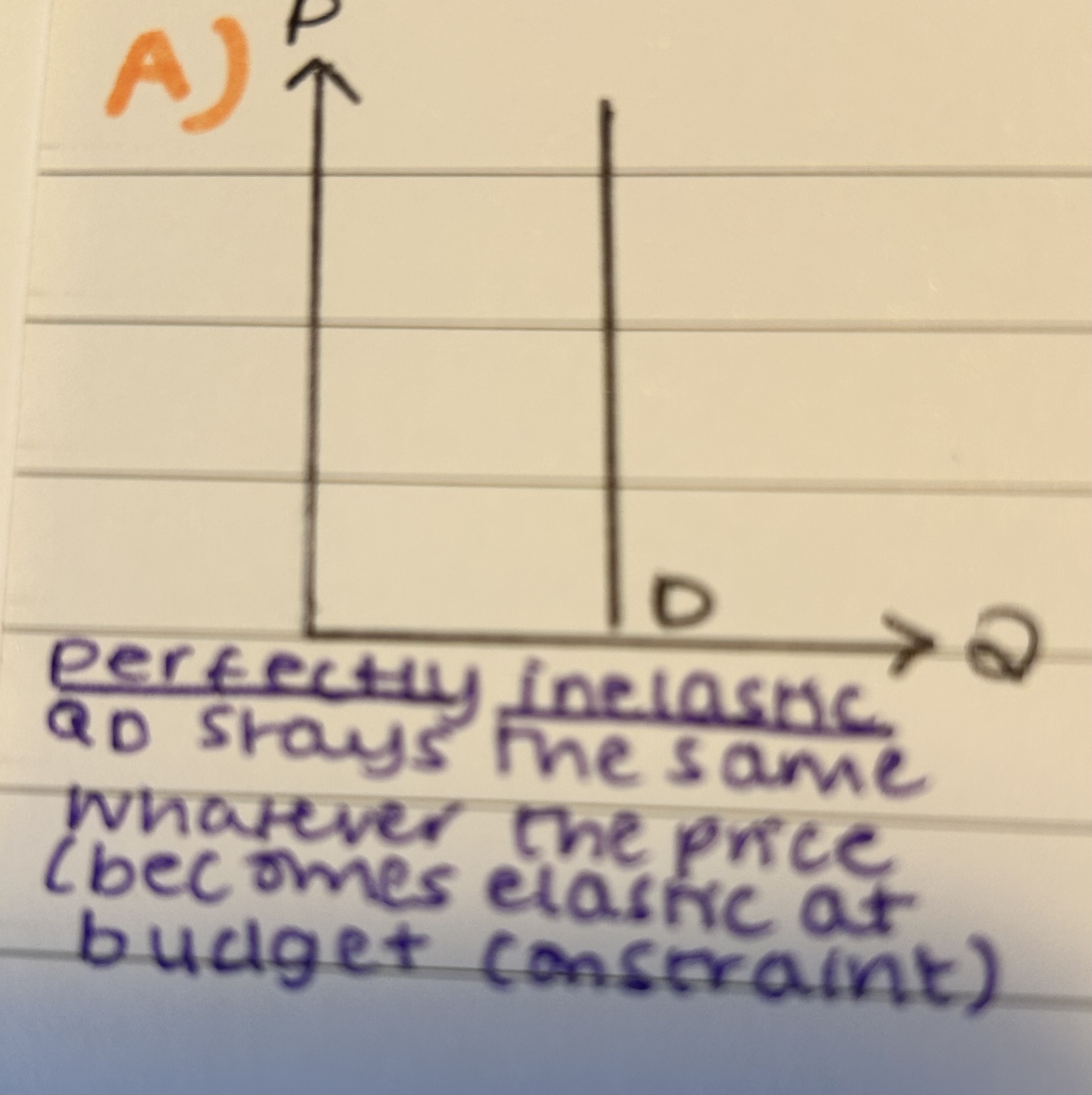
Define PED = -1.
Unitary elasticity - total expenditure stays the same all the way along the curve.

Define PED = -infinity
Perfectly elastic any change in price results in zero demand
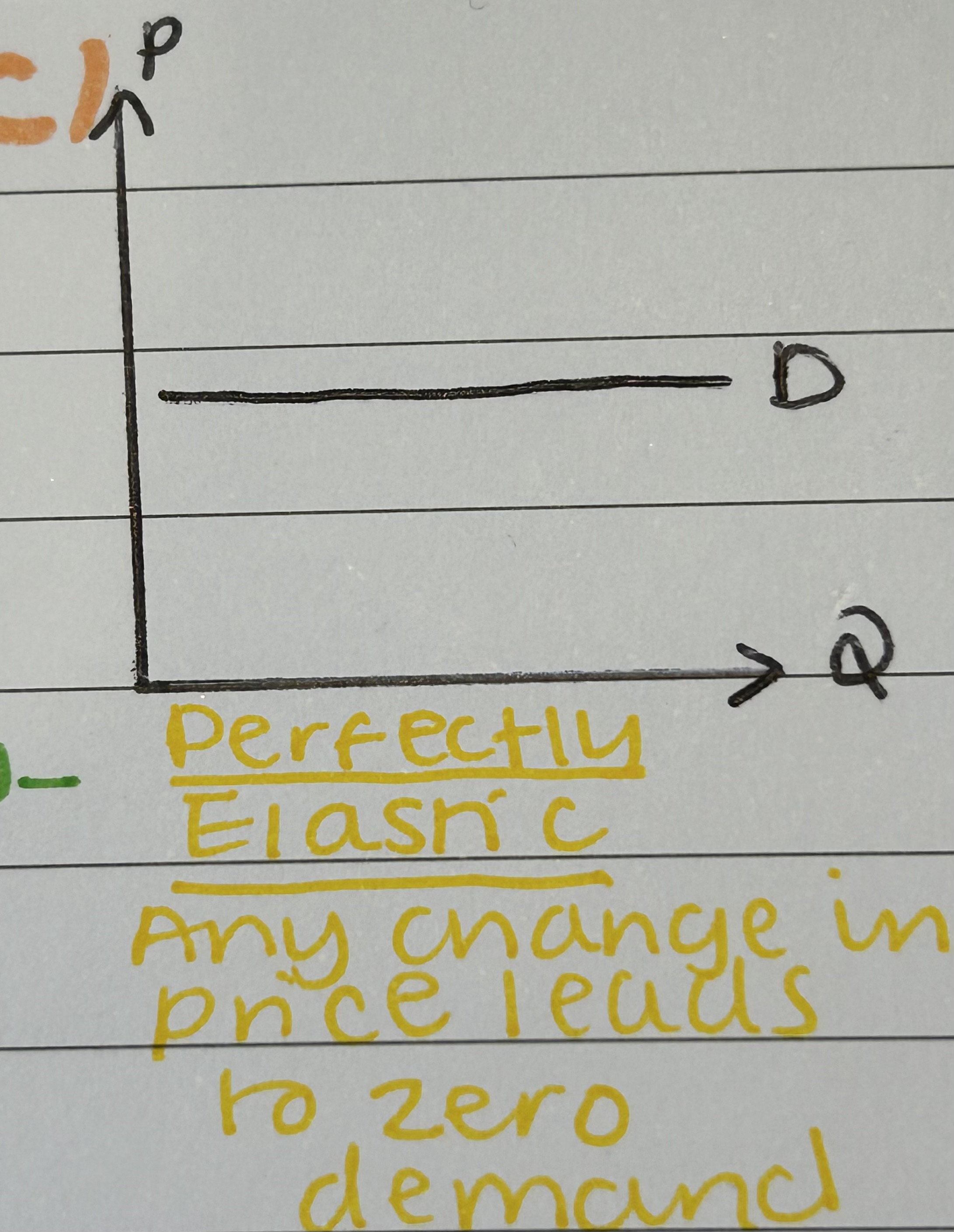
Define -∞ < PED < -1.
Relatively Elastic Demand - % Change in Quantity Demanded > % Change in Price. Demand sensitive to changes in price.
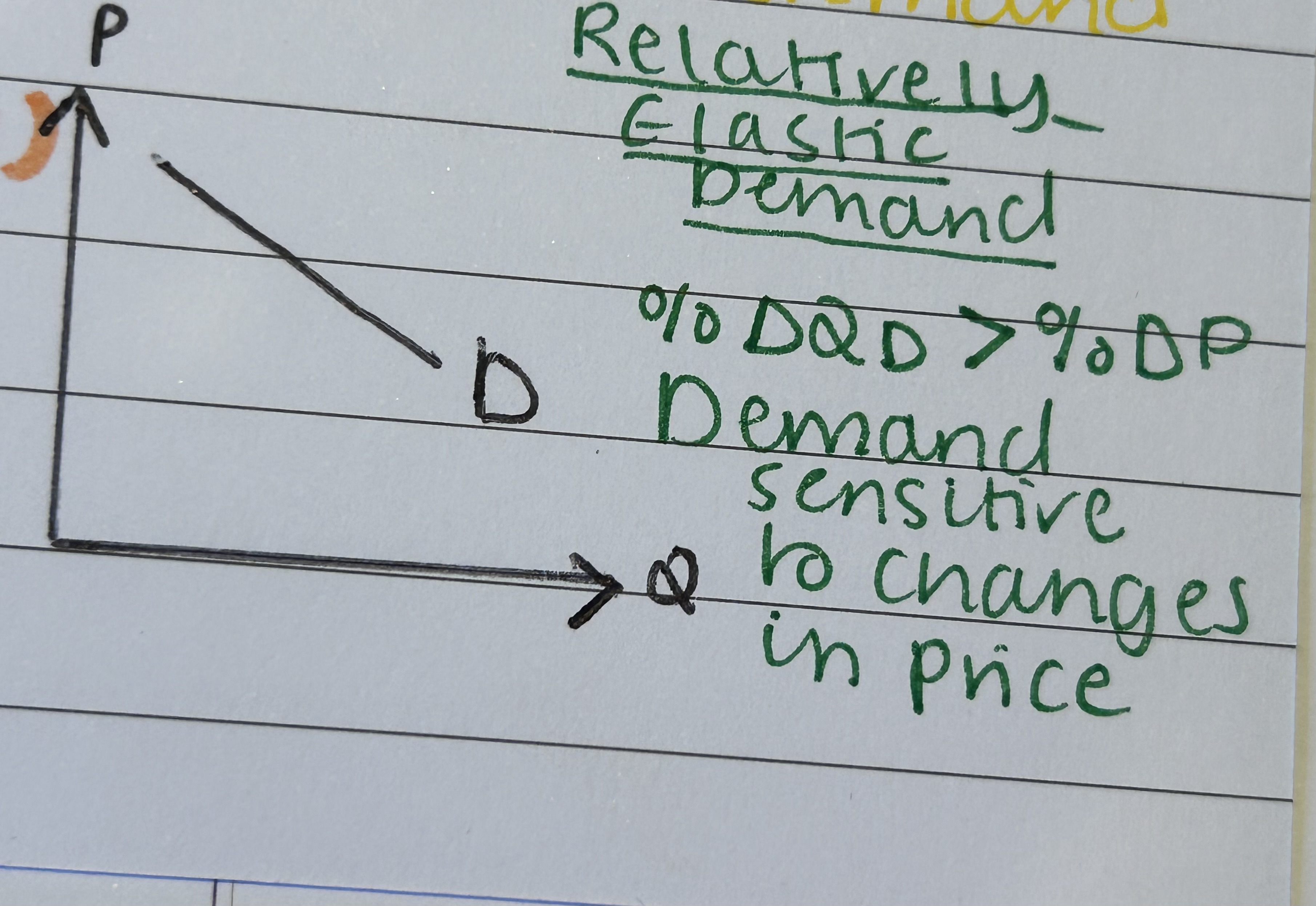
Define -1 < PED < 0.
Relatively Inelastic Demand - % Change in Quantity Demanded < % Change in Price. Demand insensitive to changes in price.
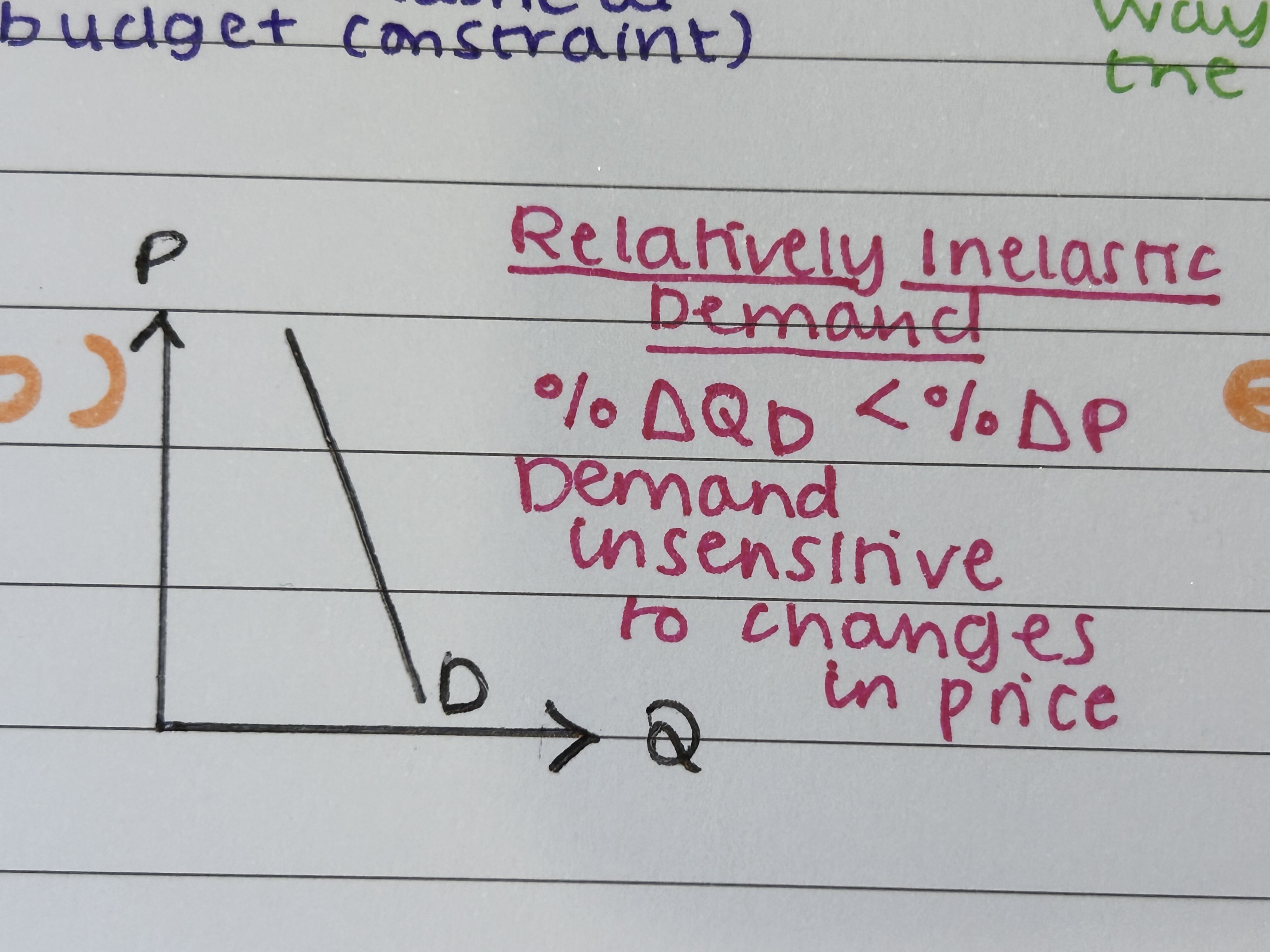
What should a company do in terms of price to maximize expenditure if PED is inelastic?
Raise prices, since %ΔQD < %ΔP, so what is lost in quantity demanded will be made up for by the increase in price.
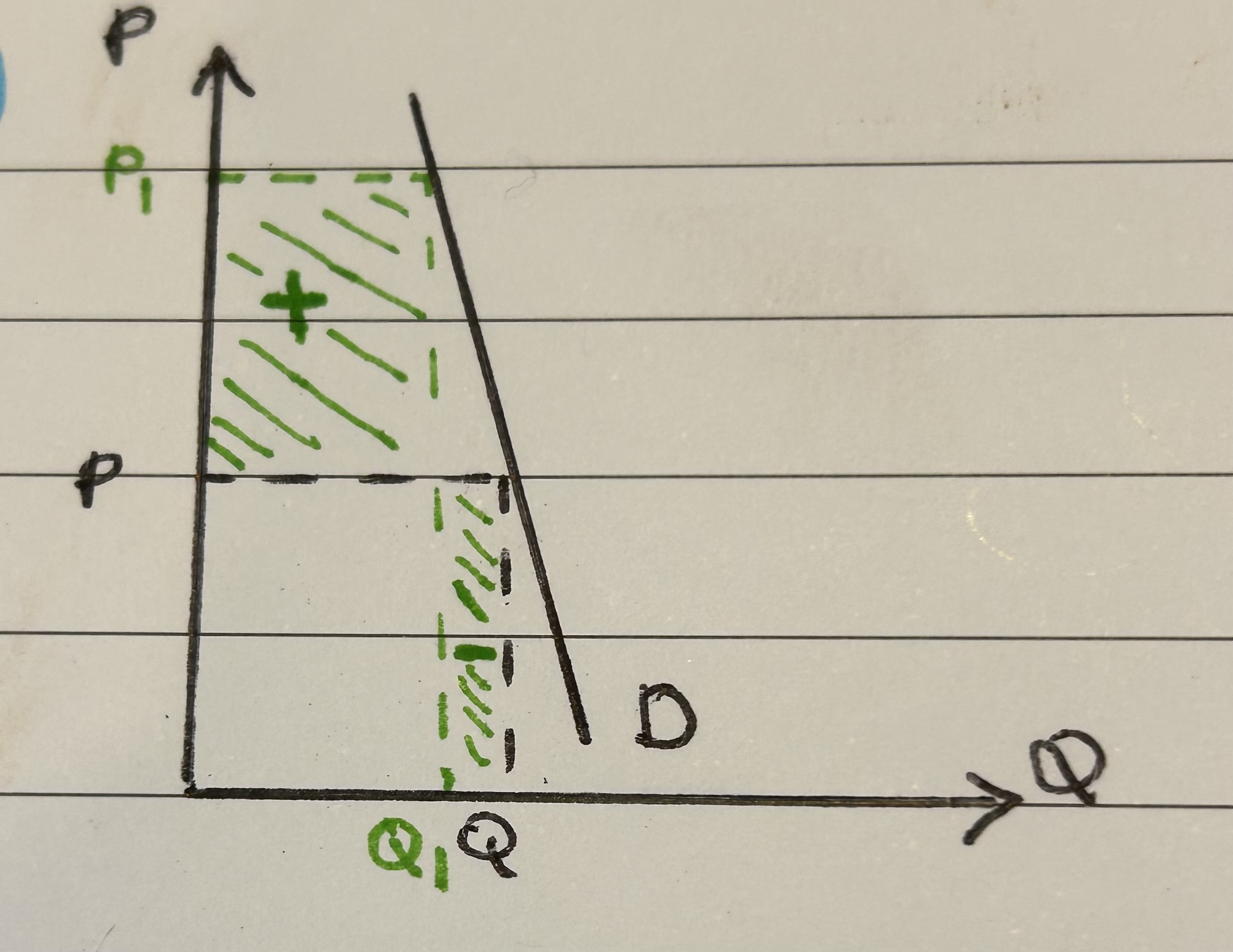
What should a company do in terms of price to maximize expenditure if PED is elastic?
Lower prices, since %ΔQD > %ΔP, so what is lost in price will be made up for by the increase in quantity demanded.

State the formula for expenditure. Show it on a graph
Price x Quantity
